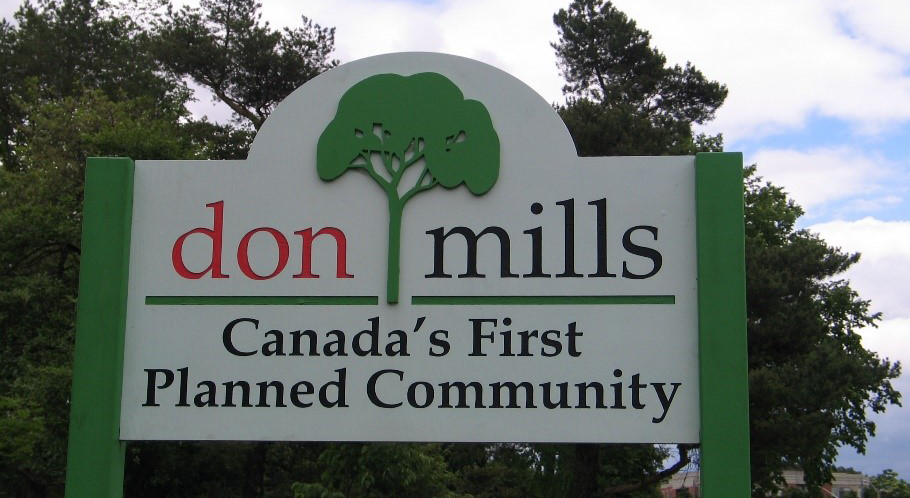
Teenagers are attracted to the greenhouse in Concord Floral because it offers them freedom from the suburban architecture in which they have grown up. Their familiarity with the landscape has turned into resentment, and Concord Floral allows them to explore the unknown and defy the boundaries of how they have been taught to live. 
This play is set in Vaughan. Vaughan, the first influential Canadian suburban development project, began when, in 1953, E.P. Taylor bought the 834-acre land in Toronto centring around Don Mills Road and Lawrence Avenue East. Young urban planner Macklin Hancock and his assistant Douglas Lee collaborated with him to design what they hoped would be a vibrant community – affordable, green, and built with all the stores and utilities one could need. The two aimed for self-sufficiency without isolation, wanting citizens to be able to find all they needed without having to go outside Don Mills. Specifically, Hancock designed curving streets that ended in T-shaped intersections and cul-de-sacs; he strove to create a pattern that would slow traffic and discourage outsiders from entering the community. In fact, these planners excluded sidewalks from their design to keep vehicles and pedestrians separated from each other.

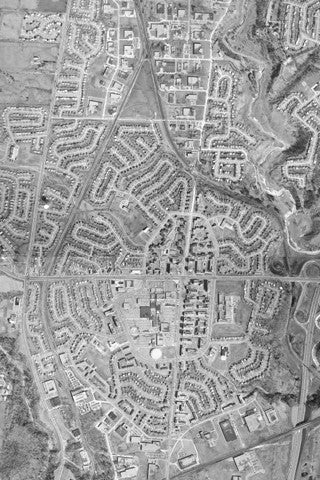
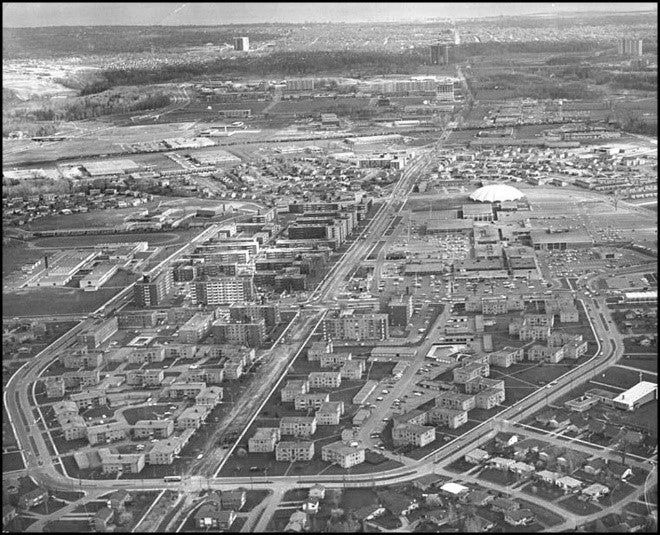

Aerial shots of Don Mills.
Modernist architects John C. Parker, Peter Dickinson, and Henry Fliess worked to realize Hancock’s vision for Taylor’s new town. At least 53 different housing designs had been created by 1954. While Don Mills was intended to have the opposite of a cookie-cutter aesthetic, all construction took place using only approved colours and materials. These regulations were intended to give the new community a feeling of homeyness until citizens could form their own sense of home. Don Mills is known today for its wide houses, but also for having a variety of buildings – such as low-rise apartments, semi-detached houses, and rental row homes – to create a mixed-income community.
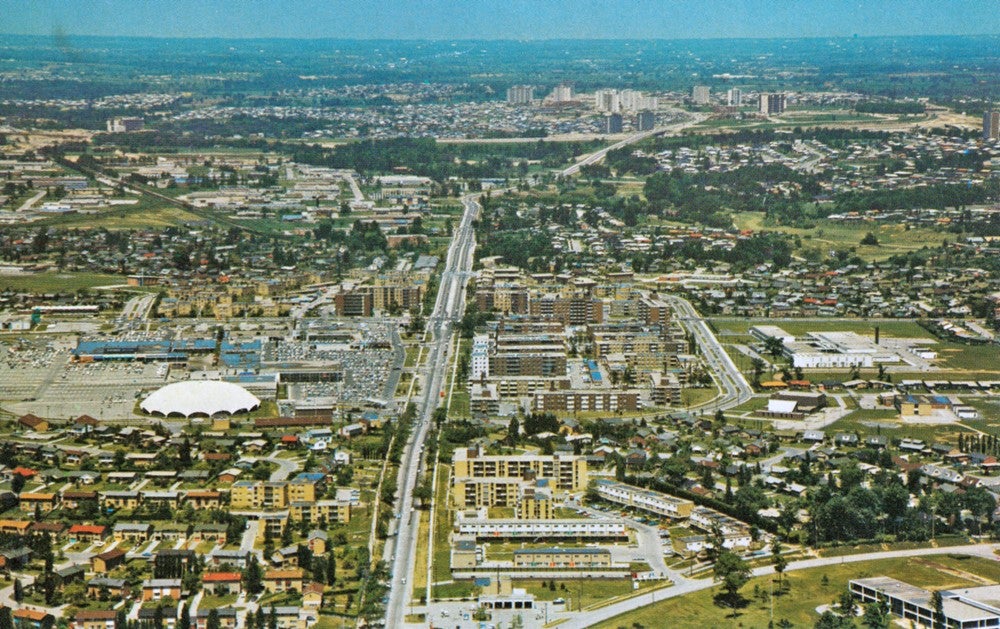

Modern-day Downtown Don Mills
Designers of Don Mills put in place many other strict regulations, often with positive intent. Greenbelts were placed throughout the community to ensure that citizens could enjoy being surrounded by nature, while zones for business and commercial buildings encircled, but did not enter, residential areas. Indeed, Don Mills was created with a specific kind of controlled perfection to it.
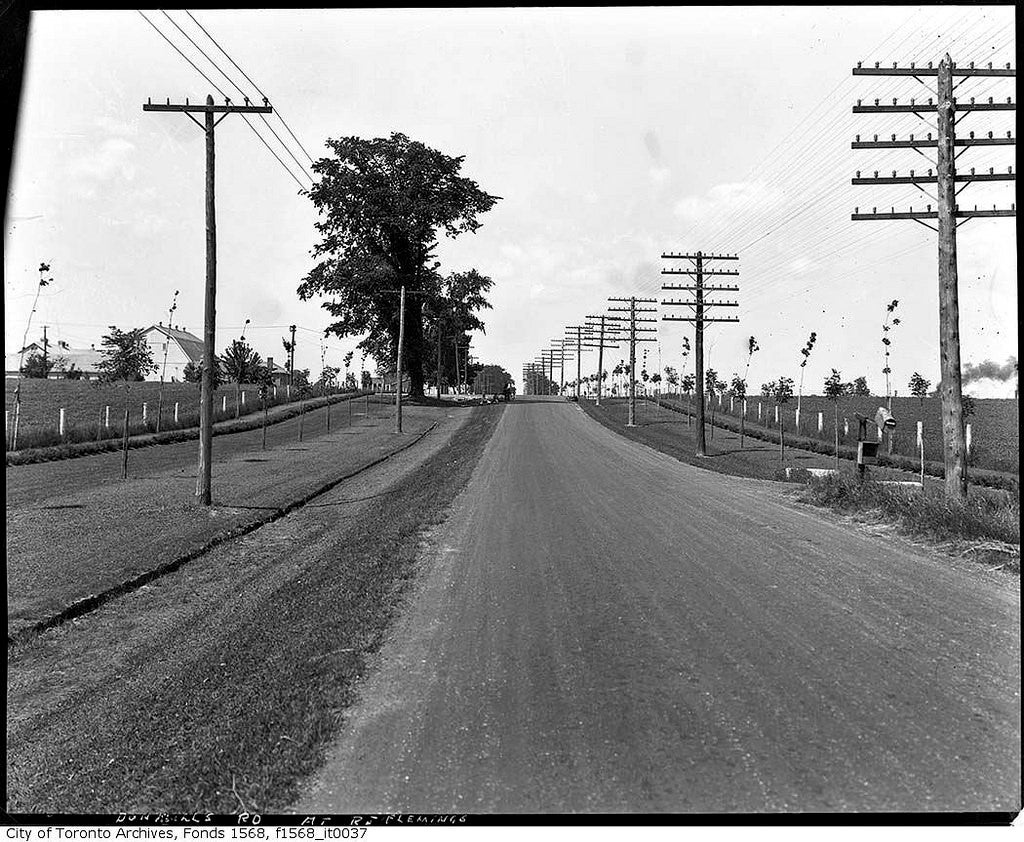
Greenbelts in Don Mills.
In a post-WWII era where Canadians craved modern and affordable housing, real estate sales in Don Mills had nearly exploded with popularity by 1954. According to Peter Slaughter, whose family was one of the first to move into the neighbourhood, “[w]e decided on Don Mills because we disliked the idea of living in an average development where the houses were like boxes row on row. We wanted to live in a neighbourhood that wasn’t monotonous, where we wouldn’t feel compelled to escape from our street at every opportunity.”
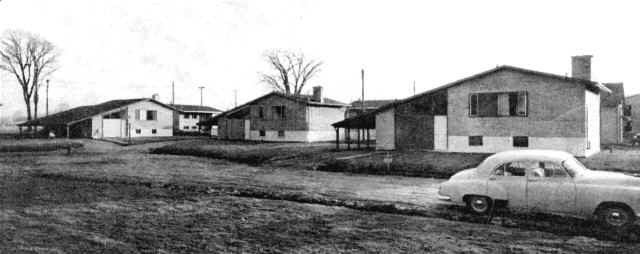
Don Mills, 1952-54
Like all successful ideas, Hancock’s design for Don Mills has strongly influenced the development of many subsequent suburban communities. From Vaughan to Markham, most suburbs in the GTA have similar layouts and goals – namely, to allow citizens to occupy themselves within their neighbourhoods. However, many, perhaps particularly young adults, have grown aware of the paradoxical nature of suburbia. Houses are big enough for families to live in, yet the familiarity of each room eventually makes all the homes seem cramped. Communities are built so that stores sell everything people could want to buy within driving distance, but, as people begin to drive everywhere, they become alienated from larger cities and from each other. The teenagers in Concord Floral are acutely aware of this psychological phenomenon, and so they look for escape. They have fun. They make mistakes. Most importantly, however, they rebel.
Welcome to Concord Floral.
References
Bellamy, Matthew. The Brewing Battle. Canada Corner, 10 October 2014, https://legionmagazine.com/en/2014/10/the-brewing-battle/. Accessed 04 October 2017.
Boyd, Angela. “Once Upon a City: How Don Mills Changed City Building.” The Toronto Star, 21 July 2016, https://www.thestar.com/yourtoronto/once-upon-a-city-archives/2016/07/21/once-upon-a-city-how-don-mills-changed-city-building.html. Accessed 04 October 2017.
Galbraith, Alexandra. Don Mills Road: Opposite Farm of R. J. Fleming, East York Township. 1925, photograph, City of Toronto Archives.
History. Don Mills Residents Inc, http://dmri.ca/history/. Accessed 04 October 2017.
LeBlanc, Dave. The Soup that Fuelled Don Mills. Toronto in Time, http://citiesintime.ca/toronto/story/soup-fuelled/. Accessed 04 October 2017.
Prior, Corinna. Development History: Don Mills and Eglington, 2016, https://www1.toronto.ca/City%20Of%20Toronto/City%20Planning/SIPA/Eglinton%20Don%20Mills/ Articles/Don%20Mills%20and%20Eglinton%20Development%20History%20completed.pdf. Accessed 04 October 2017.
Scenes From Shops At Don Mills. Scenes From A City, 17 January 2014, https://scenesto.wordpress.com/2014/01/17/scenes-from-shops-at-don-mills/. Accessed 04 October 2017.
Welcome to Downtown Don Mills. Toronto Modern, https://robertmoffatt115.wordpress.com/2011/06/01/welcome-to-beautiful-downtown-don-mills/. Accessed 04 October 2017.
Welcome to the Don Mills Neighbourhood. Don Mills Living, 13 November 2014, https://donmillsliving.wordpress.com/2014/11/13/history-of-don-mills-canadas-first-planned-community-2/. Accessed 04 October 2017.